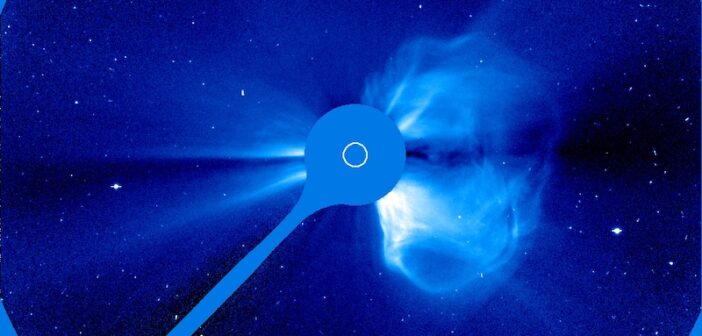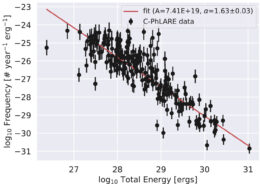Editor’s Note: In these last two weeks of 2023, we’ll be looking at a few selections that we haven’t yet discussed on AAS Nova from among the most-downloaded articles published in AAS journals this year. The usual posting schedule will resume in January.
Coronal Heating as Determined by the Solar Flare Frequency Distribution Obtained by Aggregating Case Studies
Published May 2023
Main takeaway:
With the help of numerous undergraduate physics students, a team led by James Paul Mason (University of Colorado at Boulder and Johns Hopkins University) analyzed an enormous sample of solar flares to determine the flare frequency distribution — the number of flares as a function of flare energy — and assess the importance of nanoflares as a way of heating the Sun’s outer atmosphere. This analysis showed that nanoflares cannot be the only source of heat, and plasma waves must play an important role as well.
Why it’s interesting:
The outer layer of the Sun’s atmosphere, called the corona, is extremely sparse and extremely hot. How exactly the solar corona reaches its million-degree temperature is a matter of great interest, as the corona is the site of significant solar activity and the source of the solar wind. The investigation has closed in on two main mechanisms that convert magnetic energy to heat: tiny solar flares called nanoflares and plasma waves called Alfvén waves. Nanoflares are fleeting bursts of high-energy electromagnetic radiation, and Alfvén waves are oscillations in which energy is transferred back and forth between ions and magnetic fields. Neither of these critical mechanisms can be observed directly.
How the flare frequency distribution helps settle the score:
The flare frequency distribution is a way of tallying the number of solar flares that occur at a given energy. Previous studies have shown that more powerful solar flares are less common than less powerful solar flares. Even though we can’t see nanoflares, we can guess how common they are — and therefore how much energy they can donate to the solar corona — by measuring the slope of the flare frequency distribution. Mason’s team found that nanoflares aren’t frequent enough to heat the corona to millions of degrees, so Alfvén waves must make up the difference.Citation
James Paul Mason et al 2023 ApJ 948 71. doi:10.3847/1538-4357/accc89

